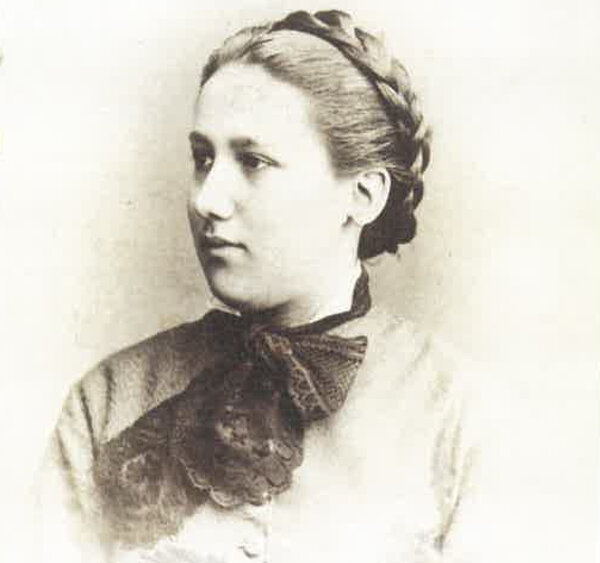Groundbreaking designs 1851-1882
In collaboration with the surgeon Professor Victor von Bruns, Christian Heinrich Erbe developed new designs that set new standards in the field of Medicine.
Christian Heinrich Erbe (1821 – 1902)

When Christian Heinrich Erbe returned to Tuebingen from his travels as a qualified precision mechanic in 1848, times were troubled. There was no German nation state as yet, and the small German states found themselves in a situation of commercial and political unrest. The Revolutions of 1848/49 shook Europe as well as its inhabitants. In these uncertain times, the young tradesman debated whether he should try his luck in America, like hundreds of thousands of his contemporaries. However, that's when he met Marie Lenz. They married, and Christian Heinrich Erbe opened a mechanics workshop in Tuebingen on October 1st, 1851 at no. 3 Holzmarkt.
Prior to his travels, Erbe had been apprenticed to Johann Gottlieb Buzengeiger, a Tuebingen-based university specialist in mechanics who enjoyed an outstanding reputation. With his in-depth knowledge
and conscientious approach, Erbe soon won the trust of eminent university professors. In collaboration with the surgeon Professor Victor von Bruns, he developed new designs that set new standards in the field of medicine. Shortly after establishing his workshop, Christian Heinrich Erbe also began trading third-party products in the fields of optics and medical devices.
Christian Heinrich Erbe also held a number of honorary offices. He was municipal councilor, alderman, a judge in orphan affairs, and, until late in life, a sworn measures verification official. In 1882, he transferred the workshop to his son Christian Gottlieb.
In 1902, Christian Heinrich Erbe died at the age of 81.
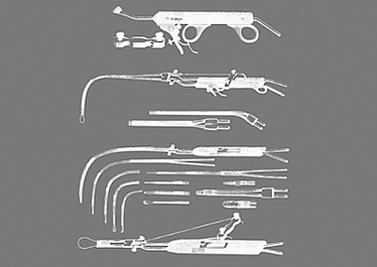
In the mid-19th century, galvanocaustic therapy comprised using platinum wire that was heated by electrical current to separate human tissue. The instruments used in galvanocaustic therapy as described by Prof. Victor von Bruns were among the first medical electrical devices to be manufactured by Erbe from the 1850s onwards. Bruns, a surgeon with an international reputation, carried out pioneering work in laryngeal surgery. Christian Heinrich Erbe designed a variety of new instruments for him for use in galvanocaustic therapy, which continued to be used almost unaltered for decades.
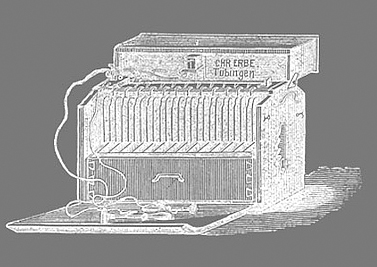
Until well into the 19th century, physicians used galvanic batteries as the source of current for galvanocaustic therapy in medical applications. Plates made of zinc and copper or zinc and carbon were immersed in sulphuric acid or chromic acid. As a result of the electrochemical reaction between the components, direct current was produced, which was used in surgical applications.

Just seven years after it was established, the workshop was already too small: in 1858, Christian Heinrich Erbe and his wife Marie bought the building at no. 2 Neue Straße in Tuebingen. Their workshop, retail store and private apartment were now under one roof. The Erbes had four children, two of whom died before their first birthday. In 1860, when already in the new apartment, their youngest daughter Elisabetha was born.
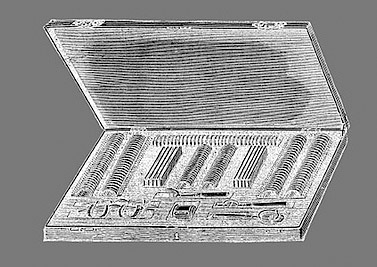
In 1867 at the International Ophthalmologist's Conference in Paris, Prof. Albrecht Nagel, an optician from Tuebingen, was the first to file an application for the refractivity of lenses to be calculated in meters – rather than in inches, as had previously been customary – and for the inverse value of the focal distance to be used as the naming convention. Thanks to Nagel's system, weaker lenses could be assigned the lower numbers and stronger lenses the higher numbers. He did not prevail until the Heidelberg Ophthalmologist's Conference in 1874. At the end of his lecture, he presented the first trial lenses box based on the new metric system: "Produced by the C. Erbe optical workshop in Tuebingen". The French optician Ferdinand Monoyer (1836-1912) introduced the "diopter" as the term for the new unit of measure.
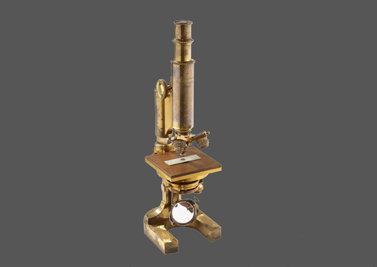
From the 1860s onwards, Erbe supplied the scientists of the University of Tuebingen with microscopes that he obtained almost exclusively from Edmund Hartnack, a German based in Paris. When Hartnack suddenly had to flee with his family to Potsdam due to the Franco-Prussian War (1870-71), Erbe lent the internationally renowned optical specialist the necessary money. He was then able to establish his own business – and paid off his debts in Tuebingen in microscopes. The device shown here dates from 1865 and probably belonged to Hugo von Mohl, a professor of botany.
